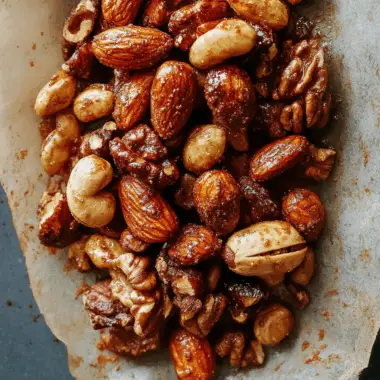The rich, velvety texture of this creamy potato soup makes it a perennial favorite during the cooler months. Infused with savory garlic, a hint of onion, and perfectly balanced by the sharpness of cheddar cheese and the smoky crunch of bacon, this dish delivers comfort with every bite. Whether you’re serving it up as a weeknight dinner or dishing out warm bowls for a cozy weekend lunch, this potato soup offers hearty satisfaction. It’s simple to prepare, budget-friendly, and endlessly customizable. Add corn, ham, or even a dash of cayenne for a twist. This is the kind of meal that invites you to slow down, curl up, and savor the moment.
Full Recipe:
Ingredients:
-
6 medium russet potatoes, peeled and diced
-
1 small onion, diced
-
3 cloves garlic, minced
-
4 cups chicken broth
-
1 ½ cups whole milk
-
½ cup heavy cream
-
1 teaspoon salt
-
½ teaspoon black pepper
-
1 cup shredded sharp cheddar cheese
-
½ cup sour cream
-
4 slices bacon, cooked and crumbled
-
2 tablespoons butter
-
2 tablespoons all-purpose flour
-
2 green onions, chopped (for garnish)
Directions:
-
In a large pot, melt butter over medium heat. Add diced onion and garlic and sauté until translucent and fragrant, about 3 minutes.
-
Sprinkle in flour, stirring constantly for 1-2 minutes to create a roux.
-
Slowly pour in chicken broth, whisking to prevent lumps.
-
Add diced potatoes, salt, and pepper. Bring to a boil, then reduce heat and simmer for 15-20 minutes, or until potatoes are tender.
-
Use a potato masher to lightly mash some of the potatoes for a thicker texture.
-
Stir in milk and heavy cream. Heat through, but do not boil.
-
Add sour cream and shredded cheese, stirring until fully melted and incorporated.
-
Stir in crumbled bacon (reserving some for garnish).
-
Ladle soup into bowls and garnish with remaining bacon and chopped green onions.
Prep Time: 15 minutes | Cooking Time: 30 minutes | Total Time: 45 minutes
Kcal: 380 kcal | Servings: 6 servings
A Deep Dive into Creamy Potato Soup
Few dishes capture the essence of comfort food quite like a steaming bowl of creamy potato soup. From the moment its savory aroma begins drifting through the kitchen, this humble yet luxurious classic calls to mind childhood snow‑days, cozy evenings by the fireplace, and the universal pleasure of hearty, homemade fare. Yet beneath its simple surface lies a fascinating interplay of culinary science, cultural tradition, and endless customization. In this expanded guide, you’ll discover the story behind potato soup, learn the secrets that give it velvety body and full‑bodied flavor, and come away with insights that will elevate your next batch from “good” to “restaurant‑quality.”
A Brief History and Cultural Context
Potato soup’s roots trace back to 18th‑century Europe, when the once‑exotic New World tuber transitioned from curiosity to staple. As potatoes proved resilient, inexpensive, and calorie‑dense, they quickly became a lifeline for rural communities across Ireland, Scotland, Germany, and Eastern Europe. Soup was the logical vehicle: water or stock stretched precious root vegetables to feed large families, while dairy provided both richness and a vital source of fat during lean months. Over time, each region imparted its own signature. The Irish favored leeks and cream; Germans introduced smoky pork lardons; Poles folded in earthy mushrooms; Americans, with access to cheddar and bacon, created the decadent “loaded” version most of us crave today. Though techniques differ, the core philosophy endures: simple ingredients, slow simmering, and communal sharing.
Why This Soup Feels So Comforting
Comfort food is as much psychology as flavor. Potatoes contain complex carbohydrates that release serotonin‑boosting glucose slowly into the bloodstream, producing a gentle feeling of contentment. Warm liquid, meanwhile, triggers a soothing oral sensation scientists call “thermal taste,” amplifying perceived sweetness and masking bitterness. Add dairy fat nature’s flavor amplifier and savory bacon’s umami depth, and you have a multisensory hug in a bowl. That synergy explains why potato soup often tops lists of nostalgic dishes people request when ill or homesick.
The Building Blocks of a Silky Texture
Achieving that coveted smooth‑yet‑thick consistency is equal parts ingredient choice and technique:
-
Starch Content: Russet (Idaho) potatoes are high in amylose starch, which dissolves into the cooking liquid and naturally thickens it. Waxy red or Yukon Gold varieties lend a creamier mouthfeel when partially puréed many cooks use a blend for textural complexity.
-
Roux Foundation: An onion‑infused butter‑flour roux cooked briefly before the liquid is added combats separation, locks in flavors, and provides insurance against curdling.
-
Controlled Mashing: Lightly crushing only half the cooked potatoes releases starch without erasing all chunks, giving the soup rustic body. An immersion blender creates ultra‑silky results if you prefer a velouté finish.
-
Dairy Timing: Milk, cream, and sour cream should be stirred in after the simmering phase. High heat can cause milk solids to break, resulting in graininess; gentle warming preserves silkiness.
-
Cheese Melt‑In: Finely shredded sharp cheddar melts faster and emulsifies better than larger chunks, minimizing stringiness and improving viscosity.
Flavor Architecture: Layers, Not Just Add‑Ins
The difference between flat soup and complex soup lies in layering. Starting with onion and garlic sautéed in butter builds a savory foundation known as the “flavor base.” Deglazing with broth introduces mineral depth, while simmering draws earthiness from potato skins (leave a few on for this purpose). Finally, finishing touches smoked bacon, bright scallions, and a tangy dollop of sour cream add top‑note contrast. Think of each addition as an instrument in an orchestra: played together, they create harmony.
Nutritional Snapshot and Balanced Indulgence
A generous one‑cup serving of classic creamy potato soup averages 380 kcal, delivering complex carbohydrates for energy, roughly 14 g of protein (thanks to dairy and bacon), and 18 g of fat for satiety. Potatoes contribute potassium, vitamin C, and fiber especially if some skin remains while dairy supplies calcium and fat‑soluble vitamins A and D. To lighten the dish without sacrificing comfort, swap half the heavy cream for evaporated milk, use turkey bacon, or add puréed cauliflower to bolster creaminess with fewer calories.
Creative Variations to Keep Things Fresh
Because potato soup is essentially a blank canvas, it welcomes experimentation:
-
Corn & Hatch Chile Chowder – Stir in fire‑roasted chiles and sweet corn kernels for Southwestern warmth.
-
Smoked Cod “Cullen Skink” Twist – Flake hot‑smoked whitefish into the pot; the briny notes contrast beautifully with buttery potatoes.
-
Roasted Garlic & White Cheddar – Slow‑roast garlic heads until caramelized, then blend into the broth for a gentle, sweet depth.
-
Loaded Veggie Boost – Fold in chopped kale, carrots, or broccoli florets toward the end to boost fiber and color.
-
Truffle & Parmesan Elegance – Drizzle with white‑truffle oil and finish with shaved Parmigiano‑Reggiano for a dinner‑party upgrade.
Perfect Pairings: What to Serve on the Side
A bowl of soup can certainly stand alone, but thoughtfully chosen accompaniments round out the meal:
Advertisement
-
Crusty Bread: A chewy baguette or airy focaccia allows diners to mop up every drop.
-
Crisp Greens: A lemon‑vinaigrette salad cuts through richness and refreshes the palate.
-
Pickled Vegetables: Sharp acidity from quick‑pickled onions or cucumbers balances the soup’s mellow starches.
-
White Wine: A lightly oaked Chardonnay echoes the soup’s creamy notes, while a dry Riesling offers cleansing acidity.
Storing, Freezing, and Reheating Without Compromise
Cream‑based soups can separate upon thawing, but careful handling preserves texture:
-
Cool Quickly: Divide the soup into shallow containers; rapid cooling prevents bacterial growth and maintains flavor.
-
Hold the Dairy: If you plan to freeze, omit milk and cream, then add them only after reheating.
-
Gentle Reheat: Warm on low, stirring often; avoid boiling, which can cause curdling. A splash of broth can revive thickness lost to evaporation.
-
Shelf Life: Refrigerated soup lasts 3–4 days; frozen (without dairy) stays optimal for up to three months.
Troubleshooting Common Pitfalls
-
Too Thin? Simmer uncovered to reduce, mash additional potatoes, or whisk a cornstarch slurry into the hot liquid.
-
Too Thick? Loosen with warm broth or milk; adjust seasoning afterward.
-
Curdled Dairy? Blend until smooth and incorporate a small knob of butter; the fat helps re‑emulsify.
-
Bland Flavor? Amp up salt in small pinches (potatoes absorb a lot), add a dash of hot sauce, or sprinkle smoked paprika for depth.
Conclusion:
Creamy potato soup stands at the crossroads of tradition and innovation. At its heart, it celebrates thrift and generosity transforming a handful of modest staples into a deeply satisfying meal meant for sharing. Yet its forgiving nature invites endless personalization, from regional flavor inflections to modern dietary tweaks. Master the core technique, respect the power of layered seasoning, and you’ll possess a reliable canvas for creativity season after season. Whether you ladle it into rustic earthenware for a snow‑day supper or elevate it with truffle oil for an elegant starter, this soup has an uncanny talent for gathering people around the table and reminding us of the simple joy found in nurturing food. Embrace its warmth, experiment fearlessly, and let each simmering pot tell a story that continues long after the bowls are empty.








